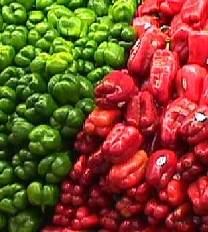

THE ISSUE:Using student-active learning to investigate the costs and benefits of crop biotechnology
for humans and the environment ECOLOGICAL CONTENT:Human induced alterations to ecosystems, beginning at the genetic level; persistence of escaped
transgenes; chemical pesticide usage; and gene transfer and resistance STUDENT-ACTIVE APPROACHES:
citizenís argument,
formal group work,
pairs check, and
pairs share
STUDENT ASSESSMENTS:minute paper, oral presentation, essay, concept map AUTHORS:Dara Zycherman1* and Jason Taylor2
1 - U.S. Green Building Council, 1015 18th Street NW, Washington, DC 20036, 202-828-7422 x156,
dzycherman@usgbc.org ACKNOWLEDGMENTS:This submission was created as part of an ecological educational internship at the Ecological Society of America by Dara Zycherman.
We thank Percy Schmeiser, a farmer who has been negatively impacted by crop biotechnology, for initial inspiration to pursue this topic.
In addition, partial funding came from a subcontract to ESA and Jason Taylor from National Science Foundation, NSF-DUE-0127388.
This submission has benefited from comments by TIEE Editors and an anonymous reviewer. CITATION:Zycherman, D., and J. Taylor. August 2004, posting date. What Are the Ecological Impacts of Plant Biotechnology? Teaching Issues and Experiments in Ecology, Vol. 2: Issues Figure Set #1 [online]. http://tiee.ecoed.net/vol/v2/issues/figure_sets/biotech/abstract.html |

Photo: green vs. red peppers
(© BW Grant) |